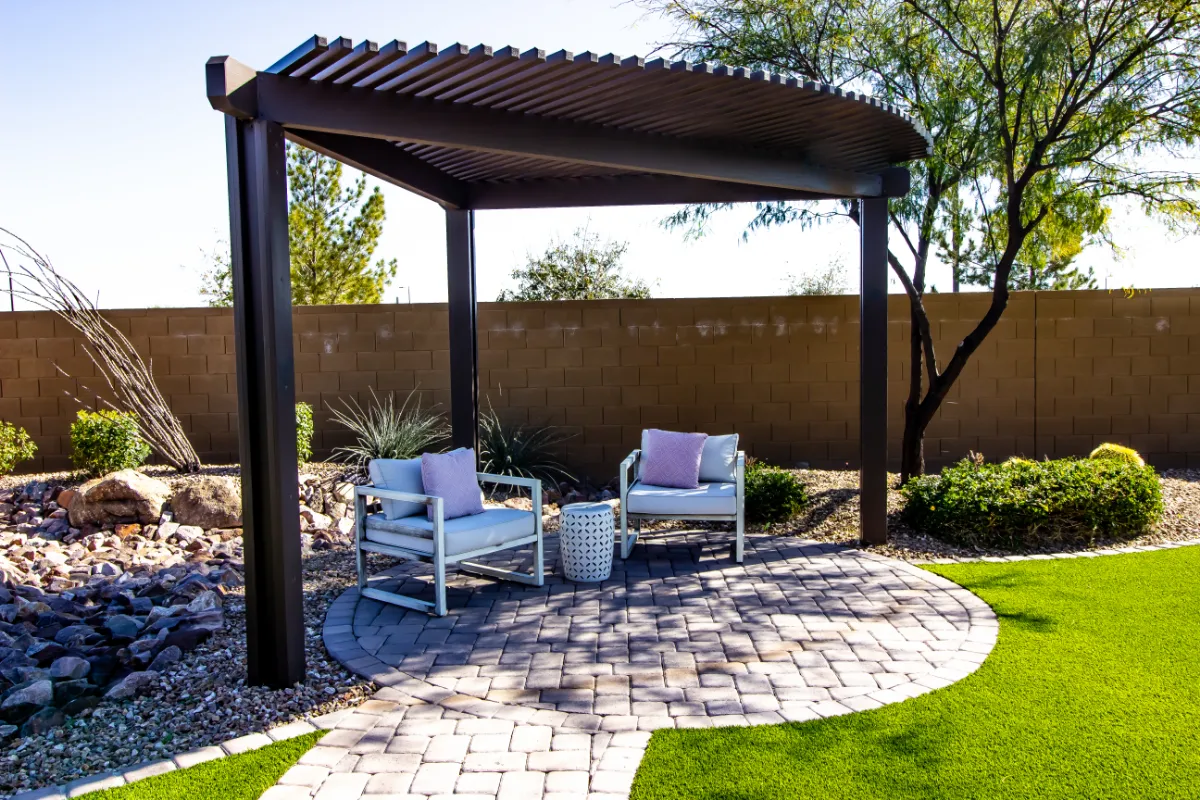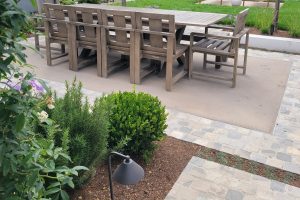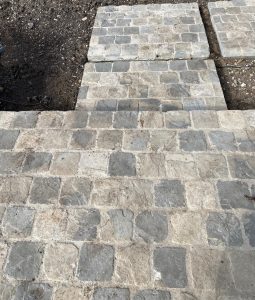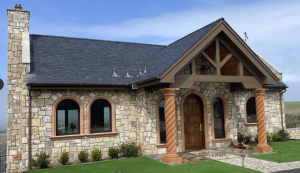Landscape boulders are an excellent way to add natural beauty, structure, and character to outdoor spaces. Whether you’re creating a rock garden, designing a water feature, or enhancing a slope, properly arranged landscape boulders can transform any yard into a stunning and functional landscape.
Arranging landscape boulders requires thoughtful planning, an understanding of natural aesthetics, and the right techniques to ensure stability and long-term appeal. This step-by-step guide will walk you through selecting, placing, and integrating landscape boulders into your outdoor design for a breathtaking result in 2025.
Why Use Landscape Boulders in Your Outdoor Design?
Incorporating landscape boulders into your yard offers both practical and aesthetic benefits, making them a popular choice for modern landscaping.
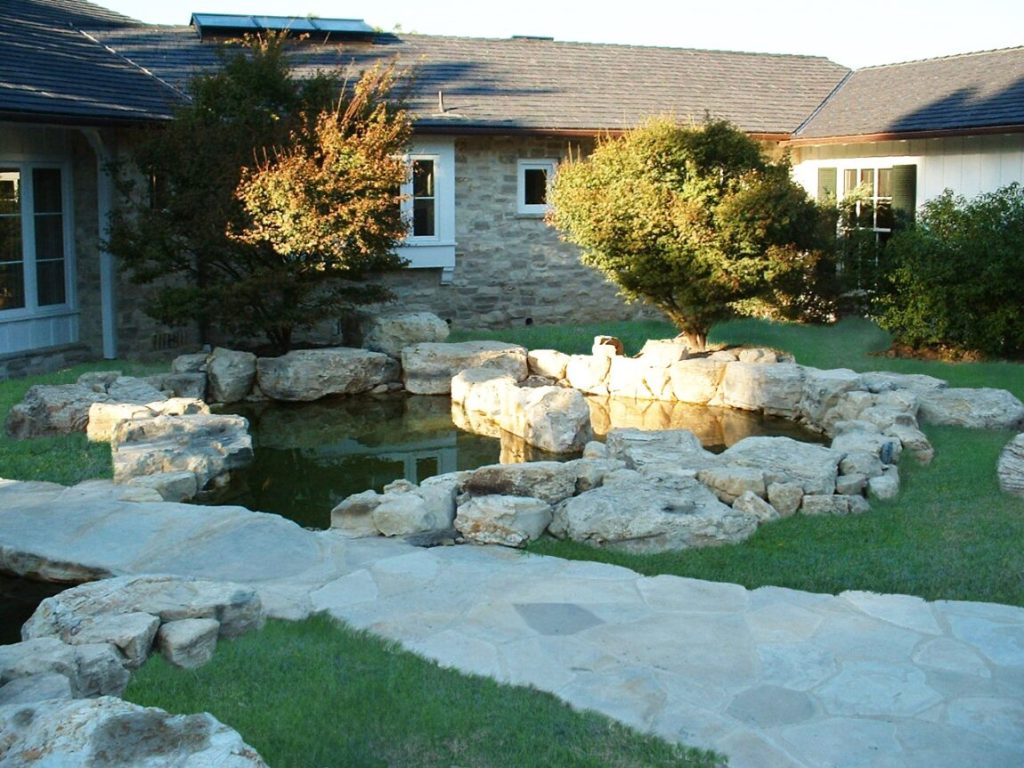
The Benefits of Landscape Boulders
Using landscape boulders in outdoor spaces provides several advantages, such as:
- Low Maintenance – Unlike plants or mulch, boulders require little upkeep.
- Natural Beauty – They add texture, contrast, and a sense of permanence to any landscape.
- Erosion Control – Boulders help stabilize soil on slopes and prevent runoff.
- Versatile Design – Suitable for gardens, water features, pathways, and retaining walls.
With the right arrangement, landscape boulders can enhance both the functionality and appearance of your yard.
Where to Use Landscape Boulders
Boulders work well in a variety of landscape applications, including:
- Rock gardens – Creating a natural and artistic display of stone and plants.
- Water features – Enhancing ponds, waterfalls, and streams.
- Retaining walls – Offering both structural support and aesthetic appeal.
- Pathway edging – Defining garden paths with a rugged, natural look.
Selecting the right placement is essential for a balanced and cohesive design.
Choosing the Right Landscape Boulders
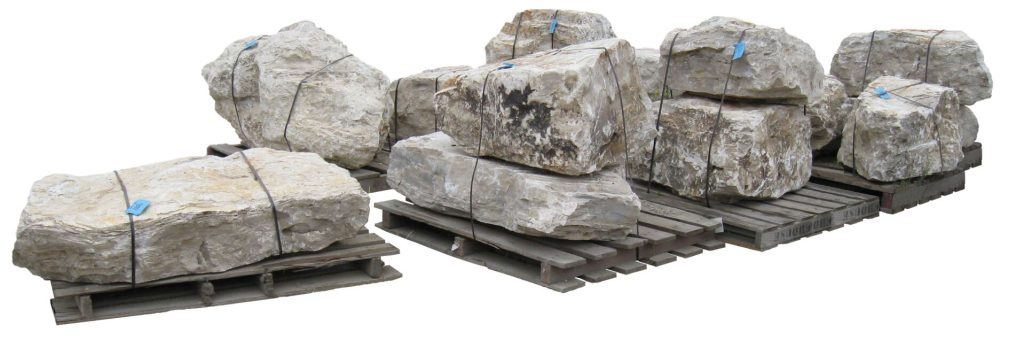
Selecting landscape boulders that complement your outdoor space is the first step in achieving a well-balanced look.
Selecting the Right Size and Shape
Boulders come in various sizes and shapes, each serving different landscape functions. Consider the following:
- Small boulders (under 2 feet wide) – Ideal for garden accents and pathway edging.
- Medium boulders (2-4 feet wide) – Suitable for retaining walls and decorative groupings.
- Large boulders (over 4 feet wide) – Best for focal points, water features, and structural elements.
Using a mix of sizes can create a more natural and visually appealing arrangement.
Choosing the Best Type of Stone
The type of stone you choose for landscape boulders should match the overall style of your yard. Common types include:
- Limestone and Sandstone – Warm, earthy tones perfect for natural landscapes.
- Granite – Durable and available in a variety of colors.
- Basalt – Dark, rugged stone that adds dramatic contrast.
Lompoc Stone offers a premium selection of natural landscape boulders to fit any outdoor aesthetic.
How to Arrange Landscape Boulders for Maximum Impact
Proper placement of landscape boulders enhances the visual flow and stability of your design.
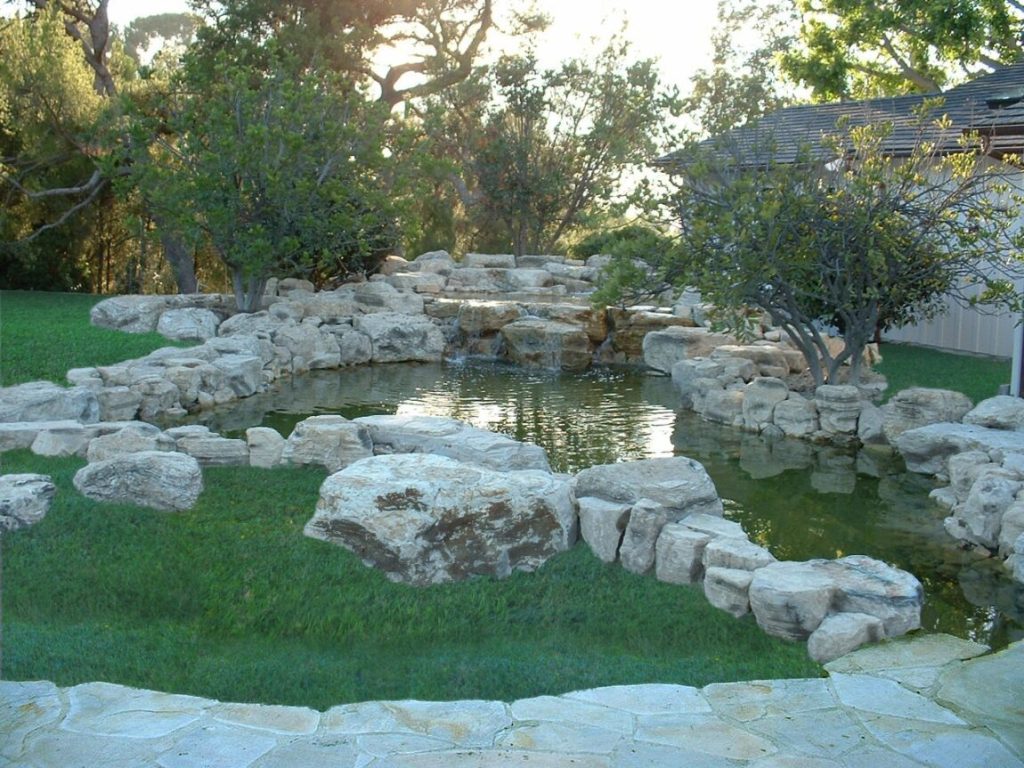
Creating a Natural Look with Boulder Placement
For the most natural effect, mimic how boulders appear in nature. Follow these tips:
- Bury part of the boulder – Placing 1/3 of the boulder below ground helps it appear more natural and stable.
- Angle boulders realistically – Position stones as they would naturally settle over time.
- Cluster in odd numbers – Groups of three or five look more organic than even-numbered arrangements.
Taking inspiration from natural rock formations will ensure your landscape boulders blend seamlessly into the environment.
Spacing and Positioning for Balance
Balance is key to a successful landscape design. When arranging boulders:
- Place larger boulders first to establish the foundation.
- Space smaller boulders around them to create a flowing design.
- Avoid lining up boulders in a straight row—stagger placements for a more natural look.
Proper spacing enhances both aesthetic appeal and structural integrity.
Integrating Landscape Boulders with Other Elements
To achieve a cohesive design, boulders should complement surrounding landscape features.
Pairing Boulders with Plants and Greenery
Softening the look of landscape boulders with plants enhances their natural appeal. Consider:
- Drought-resistant plants like succulents and ornamental grasses for a desert-inspired look.
- Moss and creeping vines to blend boulders into a forest-like setting.
- Flowering shrubs to add seasonal color and contrast.
Proper plant selection enhances the visual harmony between boulders and greenery.
Combining Boulders with Water Features
Adding landscape boulders to water elements like ponds and waterfalls enhances their natural appearance. To achieve a seamless integration:
- Position boulders along the water’s edge to create a natural shoreline.
- Use flat stones as stepping stones or seating areas near water features.
- Arrange smaller boulders around waterfalls to mimic natural rock formations.
Boulders and water features together create a serene and inviting landscape.
Alternative Ways to Use Landscape Boulders
Beyond traditional placement, landscape boulders can be used in unique and creative ways.
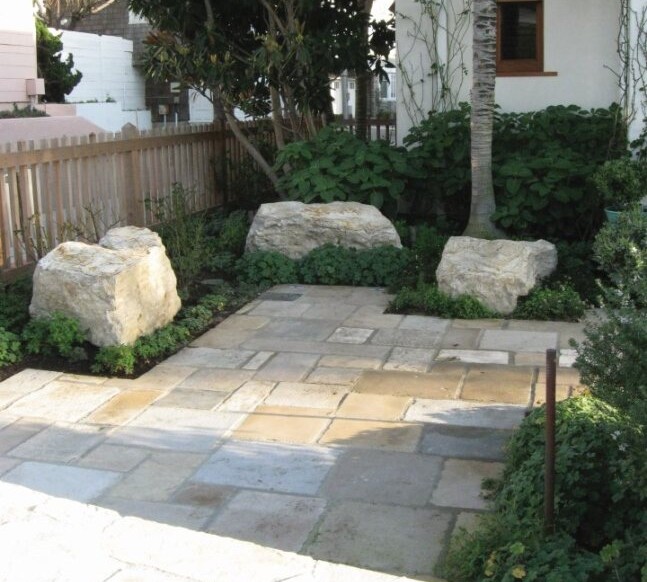
Functional Boulder Seating Areas
Large, flat-topped landscape boulders can double as natural seating for outdoor spaces. Use them in:
- Fire pit areas for rustic, built-in seating.
- Garden walkways as resting spots.
- Play areas as climbing structures for children.
Functional boulders enhance both usability and aesthetics in outdoor settings.
Using Boulders for Artistic Installations
For a dramatic effect, boulders can serve as artistic focal points. Some creative ideas include:
- Sculptural rock arrangements for visual interest.
- Zen-inspired rock gardens for meditation spaces.
- Engraved boulders featuring personalized inscriptions.
Customizing boulders adds a unique and artistic touch to any landscape.
FAQs
1. How deep should landscape boulders be buried?
Bury at least one-third of the boulder to ensure stability and a natural appearance.
2. What size boulders are best for a backyard landscape?
Small to medium landscape boulders (2-4 feet wide) work well for most residential projects, while larger boulders are ideal for focal points.
3. Can I install landscape boulders myself?
Yes, smaller boulders can be placed manually, but larger ones may require machinery for proper positioning.
4. What plants pair well with landscape boulders?
Succulents, ornamental grasses, and creeping vines work well to complement landscape boulders.
5. Where can I buy natural stone landscape boulders?
Visit Lompoc Stone for premium-quality landscape boulders designed for durability and beauty.
Conclusion
Arranging landscape boulders properly can transform your outdoor space into a visually stunning and functional environment. Whether you’re using boulders for erosion control, decorative accents, or seating areas, the key is thoughtful placement and integration with surrounding elements.
At Lompoc Stone, we provide high-quality natural landscape boulders in a variety of sizes and colors to fit any project. Contact us today to explore our collection and enhance your outdoor space with premium natural stone!

